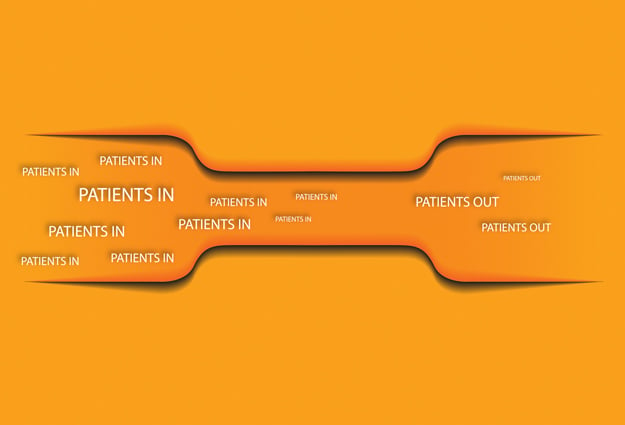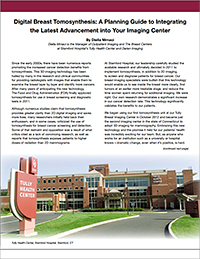
Editor's Note: This is the second installment of a five-part series adapted from the author's paper "Digital Breast Tomosynthesis: A Planning Guide to Implementing the Latest Advancement into Your Imaging Center." Links to part 1 and the full paper can be found at the bottom of this post.
Background:
We began using digital breast tomosynthesis in October 2012 - just the the second imaging center at the time to adopt 3D imaging for mammography in the entire state of Connecticut. As anyone who works for an institution like a university or hospital knows - dramatic change, even when it's positive, is hard. We faced a variety of of challenges integrating this technology into our facility and our workflow and feel the lessons we learned can benefit others as they consider implementing digital breast tomosynthesis into their hospital or practice.
A Champion (and Dramatic Workflow Changes) Emerge
So, here we were with a brand new exciting technology siting alone in a room, underutilized and collecting dust. Fortunately a champion emerged from out of the ranks of the radiologists to lead the charge in the use of digital breast tomosynthesis at our facility. Under the influence and leadership of Dr. David Gruen,the clinical director of our breast centers, we eventually had 100% adoption of this new technology by our radiologists.
Now we had a another challenge on our hands.
Our technologist, who spend the most time with our patients, were excited to start using tomosynthesis right away. Although they had to adapt to using the new equipment. the biggest disruption change for them wasn't the introduction of new technology, but in how they had to adapt their workflow - not just once, but a few times.
Operations at Tully are in full swing 12 hours a day, Monday through Friday. The schedule is usually packed every day leaving little margin for error. The combined 2D/3D screening room became overloaded as because as the technologists adjusted tot he new technology and processes, they were now averaging 20 minutes per tomosynthesis screening. Many of them fell in love with the new technology and would slip in the tomosynthesis room whenever they could for a diagnostic exam too- disrupting the schedule even further.
Our patients have time constraints and expect our breast cancer screenings to be something we can manage quickly so that they can get back to work or pick up their children. Due to the initial learning curve associated with this new technology, that simply wasn't happening. It was time to look for opportunities to improve our workflow.
Next Installment: Stress Levels Go Through the Roof
Click on the thumbnail below to read the full paper:
Related articles:

Diella Mrnaci

